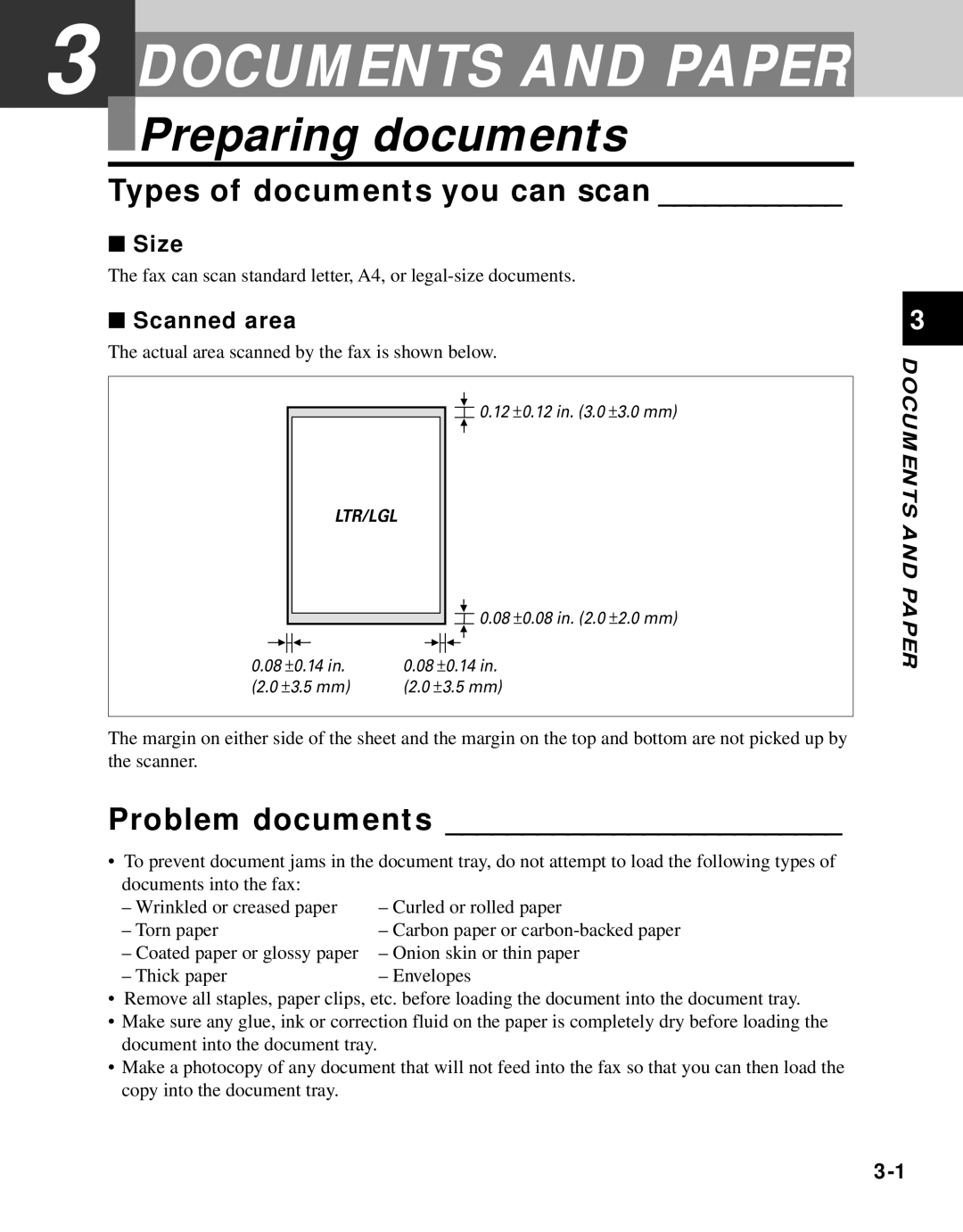
3 DOCUMENTS AND PAPER

 Preparing documents
Preparing documents
Types of documents you can scan ____________
■Size
The fax can scan standard letter, A4, or
■Scanned area
The actual area scanned by the fax is shown below.
0.12 ±0.12 in. (3.0 ±3.0 mm)
LTR/LGL
|
|
|
|
| 0.08 ±0.08 in. (2.0 ±2.0 mm) |
|
|
|
|
| |
|
|
| |||
|
|
|
| ||
0.08 ±0.14 in. | 0.08 ±0.14 in. | ||||
(2.0 ±3.5 mm) | (2.0 ±3.5 mm) | ||||
The margin on either side of the sheet and the margin on the top and bottom are not picked up by the scanner.
Problem documents __________________________
•To prevent document jams in the document tray, do not attempt to load the following types of documents into the fax:
– Wrinkled or creased paper | – Curled or rolled paper |
– Torn paper | – Carbon paper or |
– Coated paper or glossy paper | – Onion skin or thin paper |
– Thick paper | – Envelopes |
•Remove all staples, paper clips, etc. before loading the document into the document tray.
•Make sure any glue, ink or correction fluid on the paper is completely dry before loading the document into the document tray.
•Make a photocopy of any document that will not feed into the fax so that you can then load the copy into the document tray.
3
DOCUMENTS AND
PAPER
